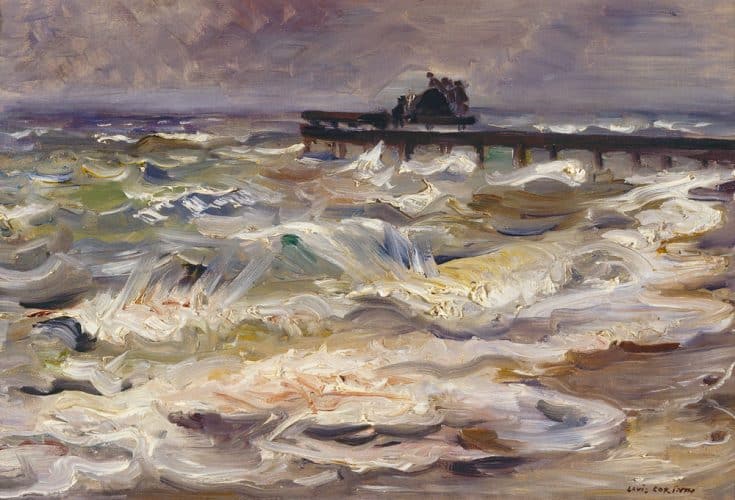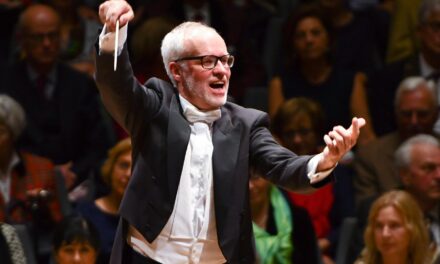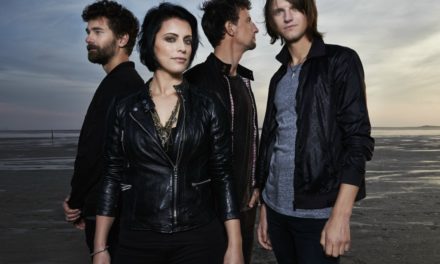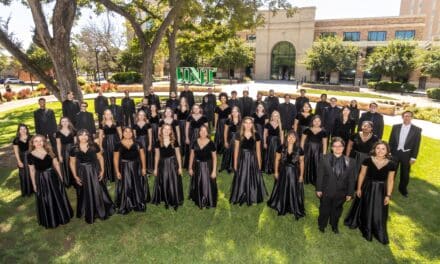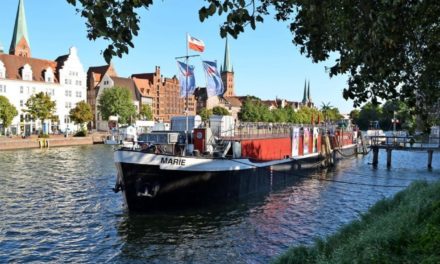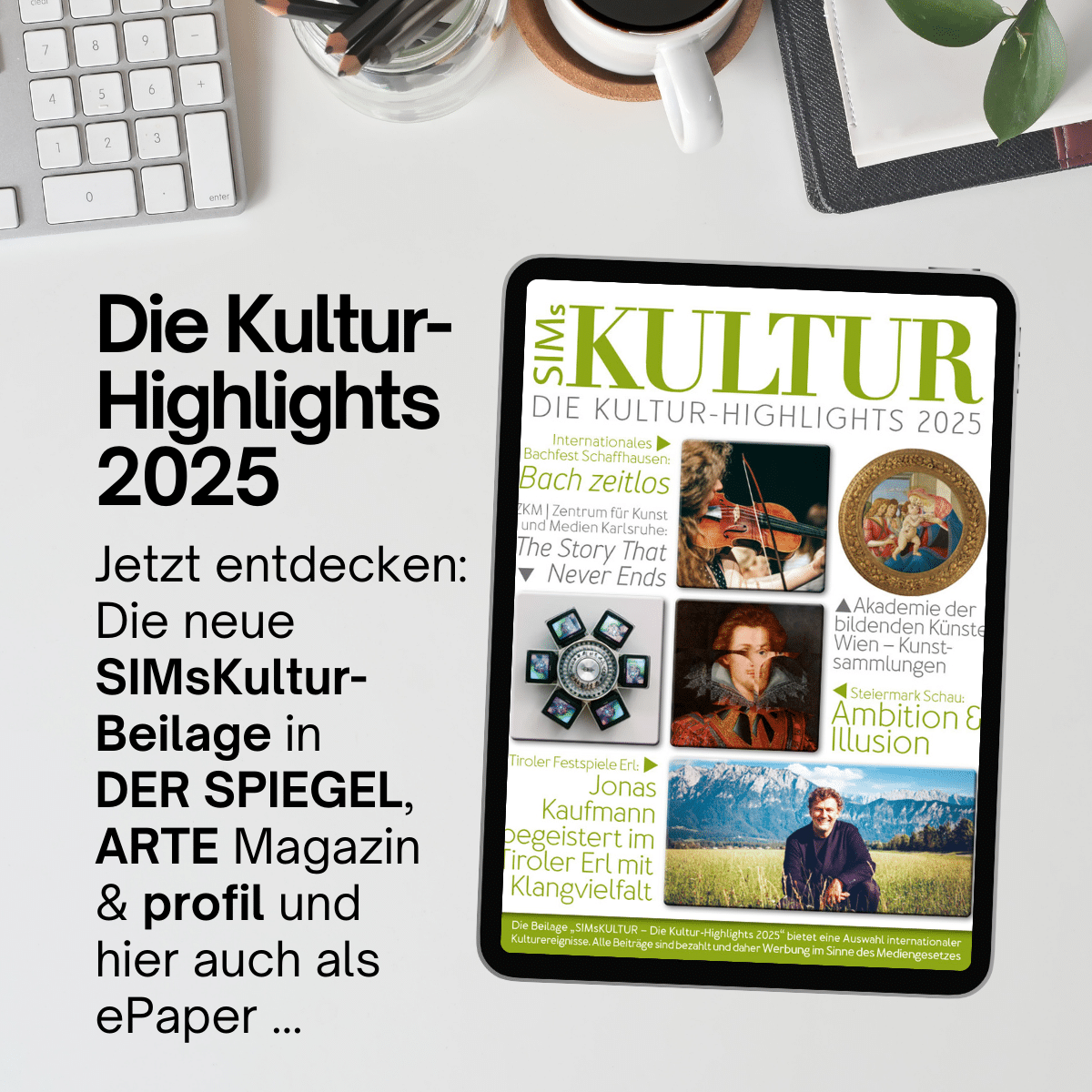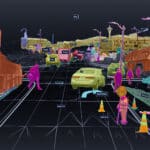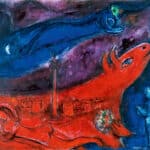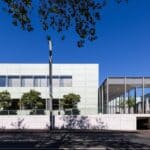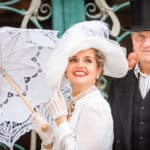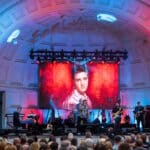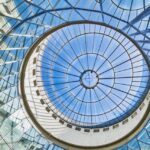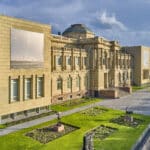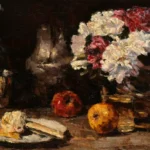Mit REMIX. 800 Jahre Kunst entdecken wird die größte Kunstsammlung der Region neu aufgemischt. Die Ausstellung zeigt die Schätze des MKK ganz neu und lädt in der großen Ausstellungshalle zu einer beeindruckenden Zeitreise durch die Jahrhunderte ein. Wen schaut sie an, die schöne Italienerin, die Theobald von Oer malte? Was geht der geheimnisvoll nachdenklichen Leontine des Anselm Feuerbach durch den Kopf? Und wieso ist Caspar David Friedrichs faszinierende Winterlandschaft keine Abbildung der Wirklichkeit, sondern eine tiefgründige Erfindung? Die Malerei und Skulptur der vergangenen Jahrhunderte stecken voller faszinierender Geschichten. Die Ausstellung „REMIX. 800 Jahre Kunst“ entdecken lädt dazu ein, sie zu erkunden. Zu sehen ist sie ab dem 24. Februar 2023 im Museum für Kunst und Kulturgeschichte (MKK) in Dortmund.
REMIX. 800 Jahre Kunst entdecken zeigt die Schätze des MKK ganz neu und lädt zu einer beeindruckenden Zeitreise durch die Jahrhunderte ein. Auf 800 Quadratmetern finden Gemälde und Plastiken aus 800 Jahren bildender Kunst zusammen – von der mittelalterlichen Romanik bis zum Jugendstil und spiegelt die tiefgreifenden gesellschaftlichen Umwälzungen, die in einer Zeitspanne von 800 Jahren (1120 bis 1926) die Lebenswelten der Menschen prägten. Zu den Highlights gehören Werke von Conrad von Soest, Caspar David Friedrich, Constantin Meunier, Anselm Feuerbach und Lovis Corinth.
Die neue Sammlungspräsentation eröffnet in vielfältigen Formaten frische Zugänge zu den Kunstwerken, veranschaulicht Bezüge der Arbeiten zueinander und vermittelt neue Erkenntnisse der Sammlungsforschung. Dabei stehen auch mal Leinwandrückseiten und Objektschilder im Mittelpunkt der Betrachtung, exemplarisch wird die Provenienz einzelner Werke beleuchtet. Zu diesem Zweck wird die Ausstellung regelmäßig in Teilen ihr Gesicht verändern.
Das Mittelalter – Gefühl und Innigkeit
Es gibt nicht bloß ein Mittelalter. Die Spanne zwischen Antike und Neuzeit ist sehr lang, dauert sie doch vom 6. bis ins 16. Jahrhundert. In dieser Zeit passiert viel. Der Vergleich zwischen dem romanischen, eher statisch wirkenden, bronzenen Kruzifix von 1120 und dem spätgotischen hölzernen Engel mit Leidenswerkzeugen vom Ende des 15. Jahrhunderts zeigt, wie sich das Menschenbild allein in drei Jahrhunderten radikal geändert hat – von einer starren Figur zur bewegten Geste. Dabei bleiben die Themen über die Zeiten überwiegend die gleichen: Schmerz, Herz und Gemeinschaft. Die Kunst des europäischen Mittelalters ist weitgehend christlich. Sie dreht sich meist um das Leiden Jesu, die empfindsame Beziehung seiner Mutter und anderer zu ihm (Mitleid und Fürsorge) und die Beziehungen der Christen untereinander (Gemeinschaft mit ihren Heiligen als Vorbilder). Diese Kunst erzählt Geschichten voller menschlicher Abgründe und ist stark gefühlsbetont und innig.
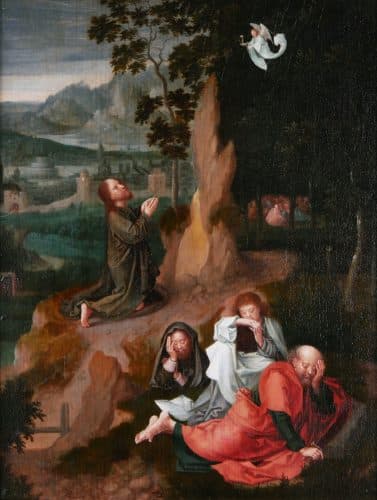
Adriaen Isenbrandt, Gebet am Ölberg, um 1530/40 © Museum für Kunst und Kulturgeschichte, Joana Maibach
Die frühe Neuzeit bis zum Klassizismus – die Entdeckung der Welt
Die lange Zeit von der frühen Neuzeit im 16. Jahrhundert über Barock und Rokoko bis zum Klassizismus um 1800 umfasst zahlreiche sehr unterschiedliche Stilepochen. Dennoch hat die Kunst eines gemein: Zwischen dem spirituellen Mittelalter und der weitgehend ebenfalls nach innen gerichteten Romantik entsteht Kunst in einem gesellschaftlichen Klima der Entdeckungen. Elite und Intellektuelle in Europa wenden sich der äußeren Welt zu. Es ist die Zeit der wissenschaftlichen Entdeckungen – bis hin zur Kolonisation und Ausbeutung der restlichen Welt.
In der Aufklärung fordern die Menschen zunehmend ihre Rechte ein. Durch die globalen Einflüsse und das gesteigerte Interesse an den Dingen werden die Kunst vielfältiger und ihre Inhalte profaner. Es entwickeln sich vor allem in den Niederlanden und Flandern ganz neue Bildthemen wie das Stillleben, die Landschaft und Alltagsszenen. Die Darstellungsarten werden vielfältiger, experimenteller und – vor allem im Barock – dynamischer.
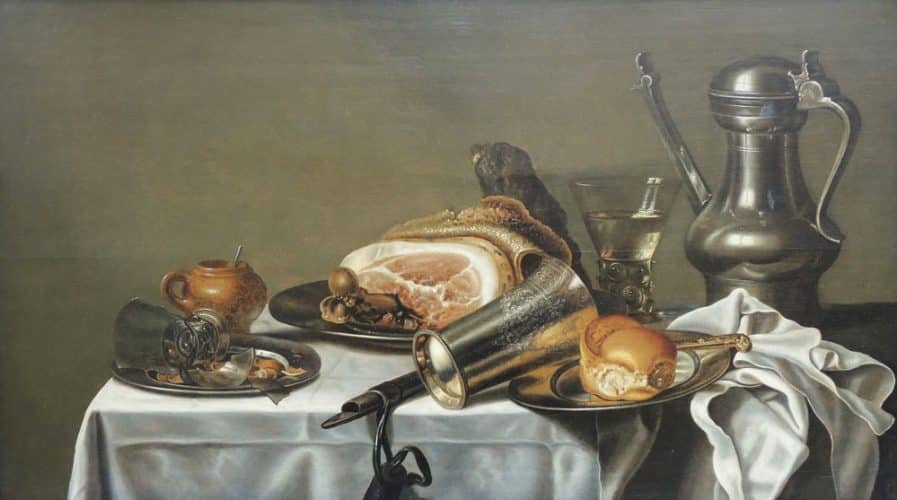
Pieter Clean, Stillleben mit Schinken, um 1635 © Museum für Kunst und Kulturgeschichte
Romantik und Biedermeier – Rolle rückwärts nach vorn
Anfang des 19. Jahrhunderts formt die politische Großwetterlage in Europa auch die kulturelle Entwicklung – vor allem die deutsche Kunst. Viele Menschen empfinden ihre eigene Zeit als sehr unsicher. Abgeschreckt von jahrelanger Gewalt nach der Revolution in Frankreich wendet sich die deutsche Elite von revolutionären Ideen ab. Auch werden die klassizistischen Ideale abgeklärter Kunstformen von vielen als zu distanziert empfunden.
Intellektuelle wenden sich wieder der Religion zu und suchen verstärkt nach Gefühl und Gemeinschaft, die sie nicht in der Aufklärung mit deren Forderungen nach mehr individueller Freiheit finden. Romantik und Biedermeier mit ihrem Rückzug ins Innere und Familiäre sind politische und künstlerische Reaktionen auf diese angstbesetzte Zeit. Zur zentralen Kulisse wird nun die Landschaft, durch die Sehnsucht und Gefühl in der Malerei ausgedrückt werden kann. Sie ist weniger Abbild als Utopie.
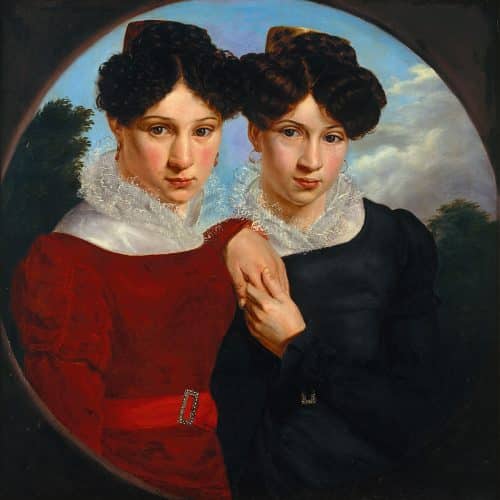
Friedrich Wasmann zugeschrieben, Die Schwestern, 19. Jahrhundert, © Museum für Kunst und Kulturgeschichte, Madeleine-Annette Albrecht,
Die Düsseldorfer Malerschule – zwischen Ideal und Wirklichkeit
Die Düsseldorfer Akademie unter Leitung von Wilhelm von Schadow steht für den Übergang von der gefühlsbetonten Romantik zum sachlichen Realismus. Künstler*innen der Düsseldorfer Malerschule sind oft noch durchdrungen von Idealismus, Innerlichkeit und religiöser Inbrunst, suchen aber zunehmend das Studium der äußeren Wirklichkeit. Die Landschaft als eigenständiges malerisches Thema rückt immer weiter in den Vordergrund.
Die deutsche Kunst um 1830 ist geprägt von klassizistischen, romantischen und realistischen Anteilen, die nebeneinander und miteinander verflochten existieren – eine unübersichtliche Lage, die der politischen entspricht: Die aufkommende antifeudale Opposition steht einer reaktionären Obrigkeit entgegen, die sich, wenig überraschend, eher in der religiösen Kunst der Nazarener wiederfindet. Die Entwicklungen hin zum Realismus sind auch einer völlig neuen Konkurrenz in der Kunst zu verdanken, mit der es zu wetteifern gilt: der Fotografie, erfunden 1826 von Joseph Niépce.
Der Realismus – Entdeckung des Alltags
Die europäische Kunst erlebt im 19. Jahrhundert zwei Revolutionen: zunächst mit dem Realismus um 1850 eine vor allem inhaltliche, anschließend mit dem Impressionismus eine der malerischen Mittel. Realistische Kunst zeichnet sich durch eine Emanzipation der Bildmotive aus. Hat es zuvor eine sehr unterschiedliche Bewertung von Bildthemen gegeben (eine christliche Szene hat immer mehr gegolten als ein Porträt und dieses mehr als eine Landschaft), so werden die Motive nun gleichberechtigt.
Der Realismus heißt aber auch so, weil die Dinge der Welt wirklichkeitsnäher dargestellt werden. Die Kunst des Realismus zielt somit auf Alltäglichkeit und Sachlichkeit. Die aufkommende Fotografie ist hier Vorbild, Konkurrenz und Ansporn. Betrachtet man hinter der Kunstentwicklung die zeittypischen Verhältnisse zur Welt, haben wir es Mitte des 19. Jahrhunderts mit dem Bestreben zu tun, sich nach der Innerlichkeit der Romantik wieder den äußeren Dingen der Welt zu öffnen.
Impressionismus – Kunst als Kunst
Nach der Öffnung der Bildinhalte im Realismus kommt es in Frankreich in den 1870er Jahren durch den Impressionismus zur Befreiung der Gestaltungsmittel. Die bekanntesten deutschen Vertreter sind Max Liebermann, Lovis Corinth und Max Slevogt. Kennzeichnend für den Impressionismus ist der sogenannte Kolorismus: Die Farbe wird zuweilen dick aufgetragen, so dass die Malerei als solche erkennbar bleibt und wir den Malprozess nachverfolgen können. Die Gemälde wirken dadurch dynamisch.
Breite Pinselstriche verhindern klare Abgrenzungen und detaillierte Ausformulierungen. Diese Unklarheit reizt unser Gehirn zur Vervollständigung, und da diese von unserer jeweiligen Stimmung abhängt, erscheinen die Werke so lebendig und subjektiv. Die impressionistisch malenden Künstler*innen konkurrieren nicht mehr mit der Fotografie und machen die Not zur Tugend: Sie malen nun gänzlich anders. Die starke Subjektivität ihrer Gemälde, die aus der Verneinung der fotografischen Genauigkeit entsteht, ist der Grundstein der Moderne.
Jugendstil – Kunst und Leben
Der Jugendstil, seit den 1890er Jahren bis zum Ersten Weltkrieg bestimmendes Kunstideal, ist eine durchgreifende Erneuerungsbewegung. Seine Vertreter*innen möchten die Ästhetik in den Lebensalltag der Menschen bringen. In der festen Überzeugung, eine schöne Welt fördere den Frieden und die Zivilisation, ist Schönheit in allen Lebensbereichen das wichtigste Ziel. Der Jugendstil ist eine internationale Erscheinung, wenn er auch sehr unterschiedliche nationale Ausprägungen hat.
Die Gemeinsamkeiten sind das Ornamentale (die Natur als Vorbild), das Streben nach Funktionalität, die Gestaltung der Dinge aus allen Lebensbereichen (Gebäude, Möbel, Gläser, Besteck) und die Lebensreform aus dem Geist des Philosophen Friedrich Nietzsche, für den die Kunst die wahre Form und Bestimmung des Lebens darstellt. In der bildenden Kunst kommen diese Ideale in der würdigen Bewegung ihrer Figuren und edlen Darstellung der Porträtierten zum Tragen.
Ab 24. Februar 2023
www.remix-dortmund.de

